Livestock Discovery: Judging Retail Meat Cuts
Livestock Discovery: Judging Retail Meat Cuts
Introduction
Why is learning to judge retail meat cuts important?
- To be successful in Skillathon and Meats Judging Contests.
- Helps you learn what to look for when shopping for retail meat cuts.
- When prepared, you have a meat cut that tastes good and is healthy for you.
Traits to Evaluate When Judging Retail Meat Cuts
Judging retail meat cuts involves the same things that are considered when purchasing a retail meat cut to cook and eat.
- Muscling
- Trim or cooking loss (excess fat and bone)
- Quality (flavor, tender, juicy, good color, etc.)
Parts of a Retail Meat Cut
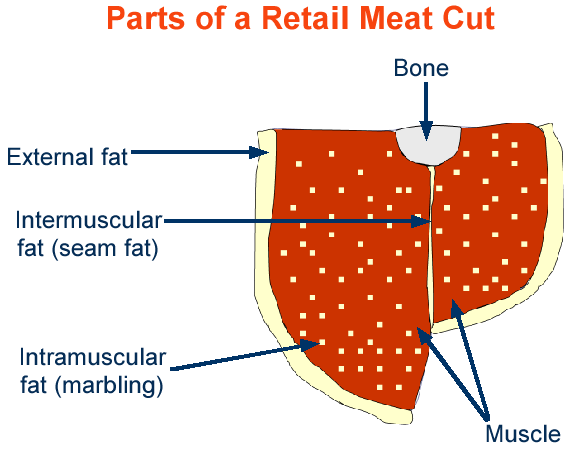
Muscling
Evaluating Muscling
- The muscle in a retail meat cut is the red or pink shaded portion of the cut.
- The muscle is the most valuable part of the meat cut.
- Although some retail meat cuts may contain only one primary muscle, others will contain several different muscles.
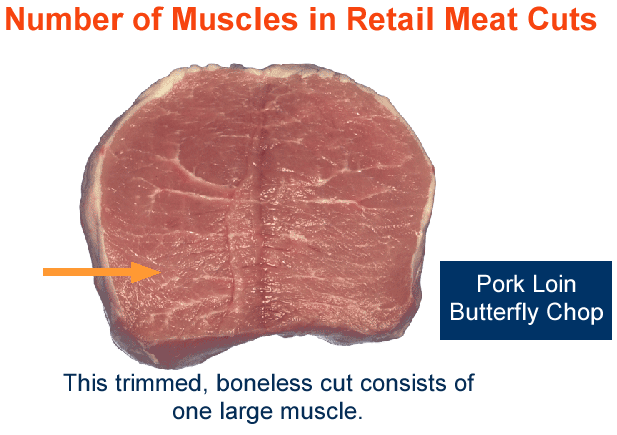
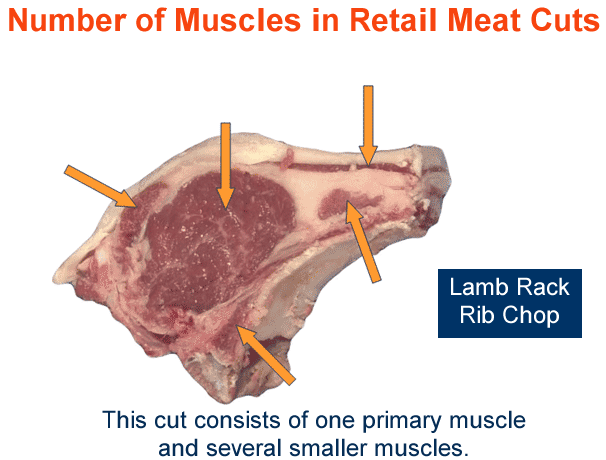

Evaluating Muscling
- No matter how many muscles are present, a good retail meat cut will have a large precentage of muscle.
- Especially when compared to the amount of fat and bone.
- When judging a class of retail meat cuts, cuts with a higher percentage of muscle are desired.
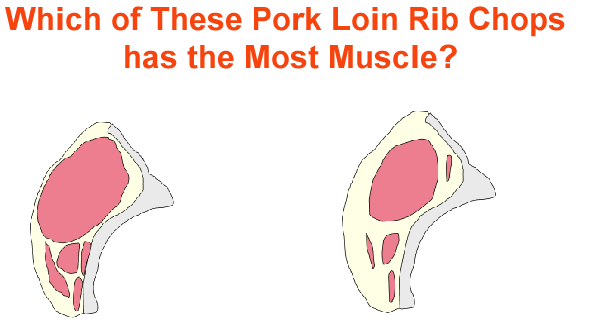
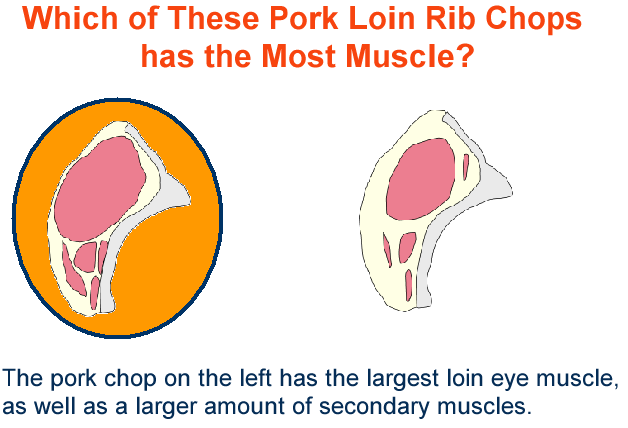
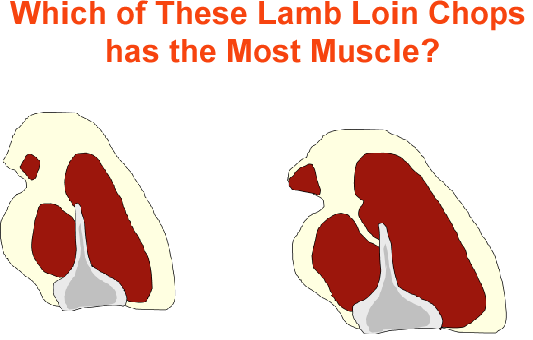
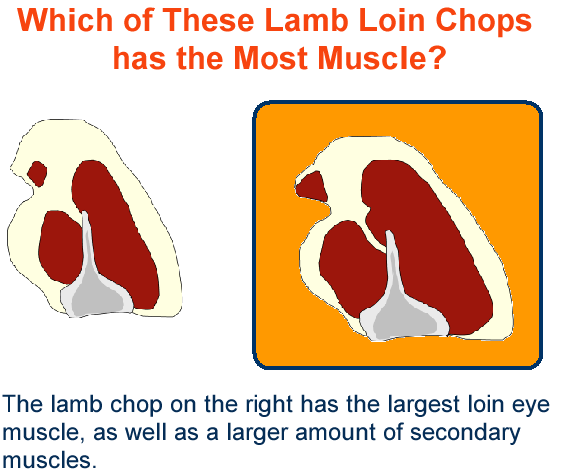
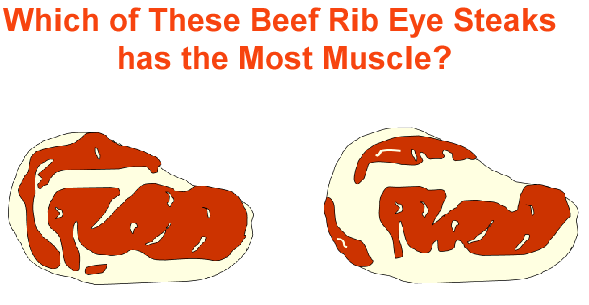
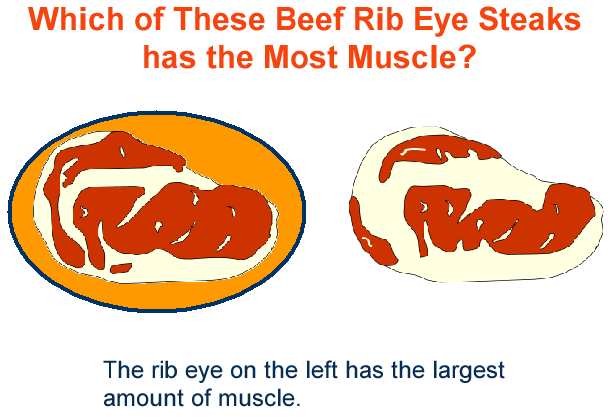
Trimming or Cooking Loss
Evaluating Trim or Cooking Loss
- Trim or cooking loss refers to the amount of fat and bone that is lost as the retail meat cut is processed, cooked, and eaten.
- In judging a class of retail meat cuts, cuts with a low percentage of trim or cooking loss (fat and bone) are most desirable.
- Should have a high percentage of muscle relative to fat and bone.
Evaluating Amount of Fat
- There are three types of fat that are typically present in most retail meat cuts:
- External fat
- Intermuscular fat (seam fat)
- Intramuscular fat (marbling)
- Of these three type of fat, external and intermuscular fat are considered waste because this fat is typically not eaten.
- Intramuscular fat is considered as a quality factor, rather than as trim or cooking loss.
External Fat
- This is the fat found on the outside of a retail meat cut.
- Most of the external fat can be removed by meat cutters as the cut is processed.
- A small amount of external fat is good because it protects the outside of the meat and keeps it from drying out.
Intermuscular (Seam) Fat
- Intermuscular (seam) fat is the fat that separates muscles.
- Unlike external fat, seam fat cannot be removed by meat cutters when the cut is processed.
- Seam fat is considered to be a waste, so cuts with minimal seam fat is preferred.
- Ideally, seam fat would only be a small line of fat in the cut, not large chunks.
Evaluating Amount of Bone
- Another factor to consider when evaluating plate loss is the amount of bone.
- Since bone is not a consumable part of a meat cut, bone is considered as a waste.
- Depending on the particular cut, retail meat cuts may contain round, flat, rib, or vertebrae bones.
- Cuts with less bone are preferred.
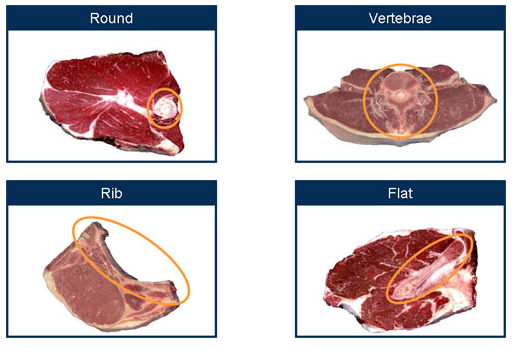
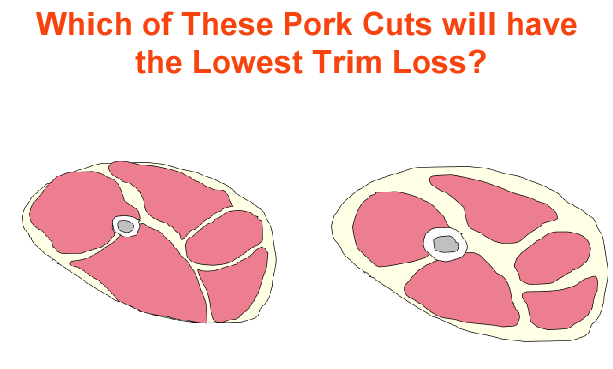
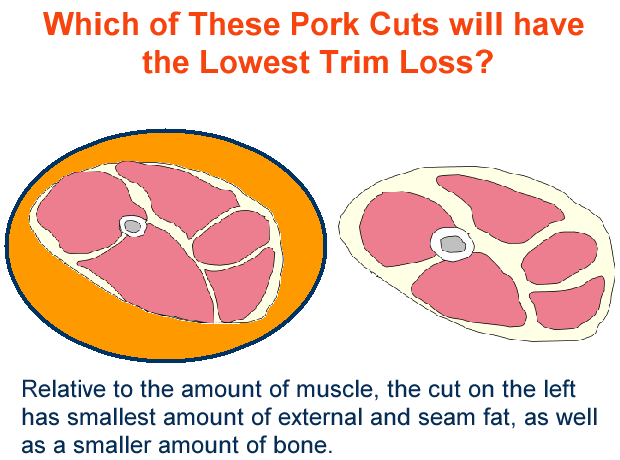
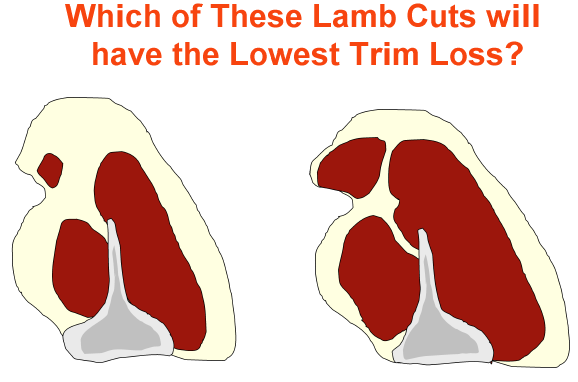
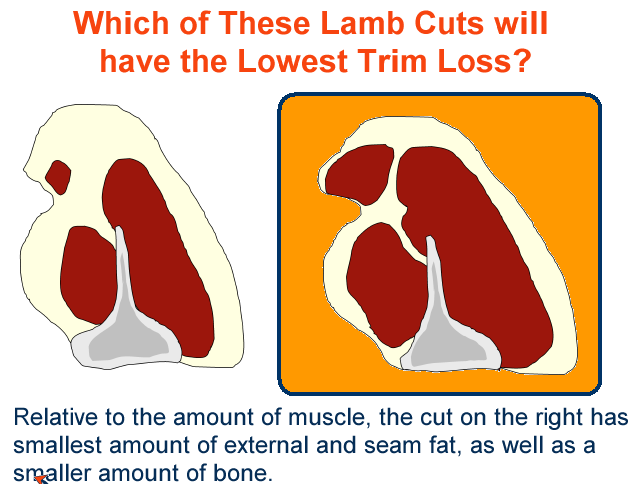
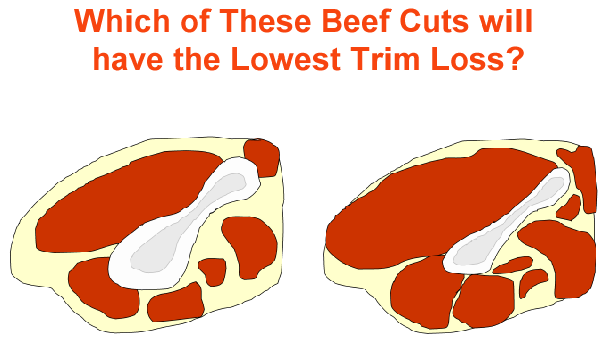
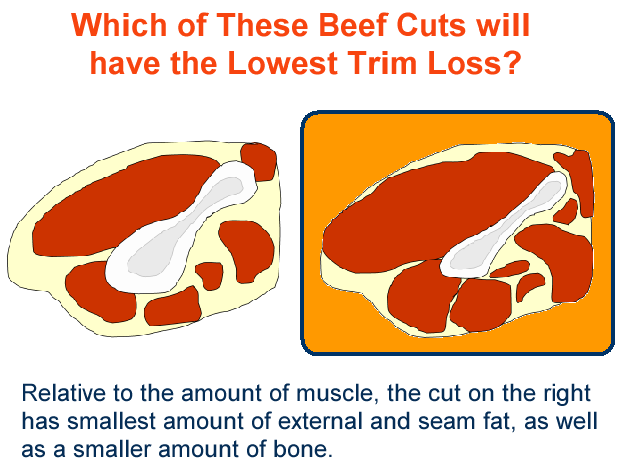
Quality
Evaluating Quality
- Quality in retail meat cuts deals with the palatability characteristics of tenderness, flavor, and juiciness, and the visual quality of the cut.
- The palatability characteristics of a retail meat cut are primarily infuenced by:
- Amount of intramuscular fat (marbling) in the cut.
- Firmness of the lean in the cut
- The visual quality of the cut is primarily influenced by the color of the cut.
Intramuscular Fat (Marbling)
- Marbling is the little flecks of fat that is found within the muscle (intramuscular fat).
- Marbling is important for:
- Flavor - marbling is referred to as the taste fat.
- Juiciness = marbling melts at cooking temperatures, and helps make cooked cuts juicy.
- Pork and lamb will typically not marble as well as beef.
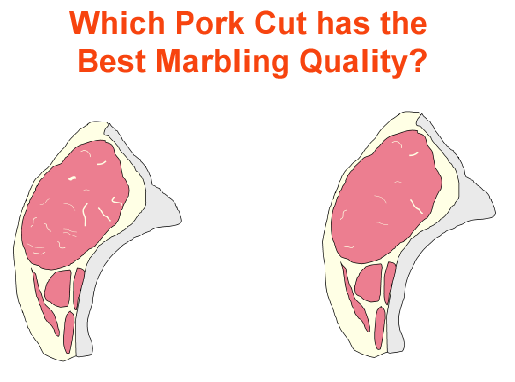
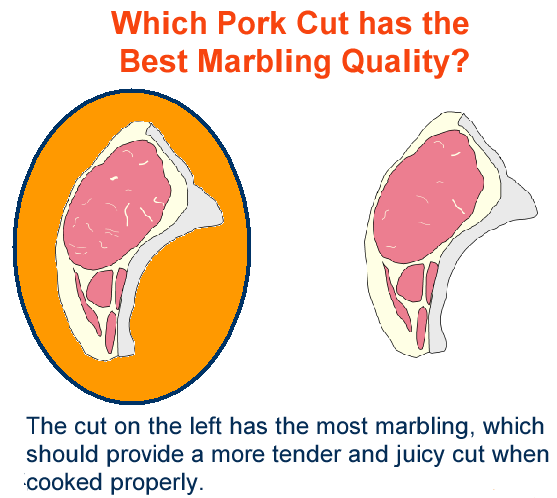
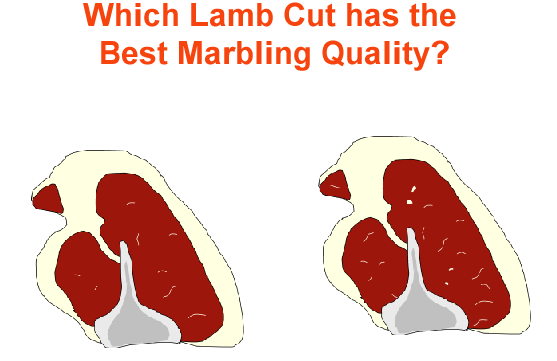
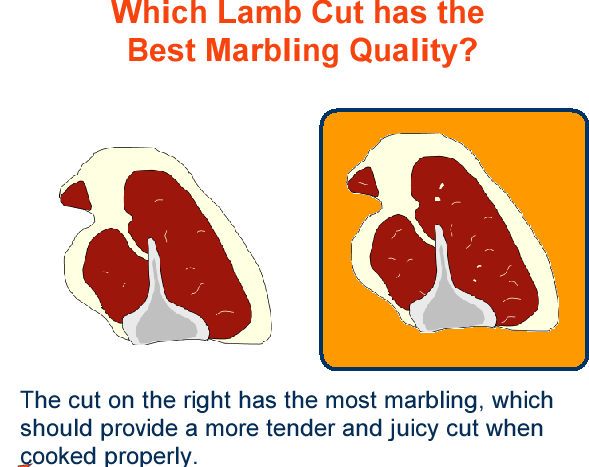
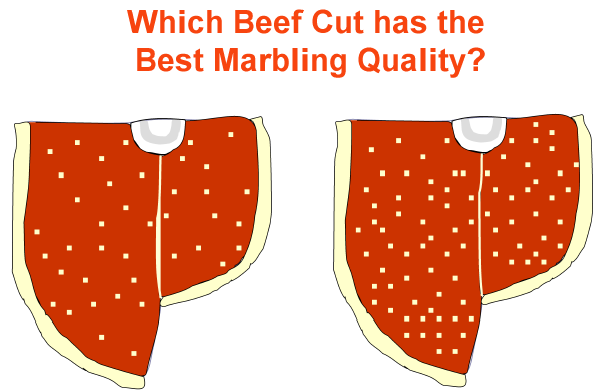
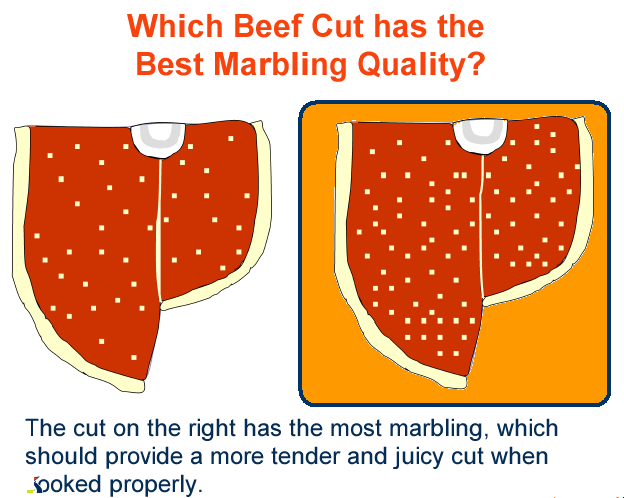
Evaluating Firmness of the Lean
- The lean in retail meat cuts should be relatively firm to the touch and should not display any obvious fluid accumulations on the surface.
- Meat cuts should be discounted if they are:
- Very soft with excess moisture on the surface or present in the packaging. These cuts will lack juiciness and be tough after cooking.
- Overly firm and dry. These cuts often have a short shelf-life, and are tough after cooking.
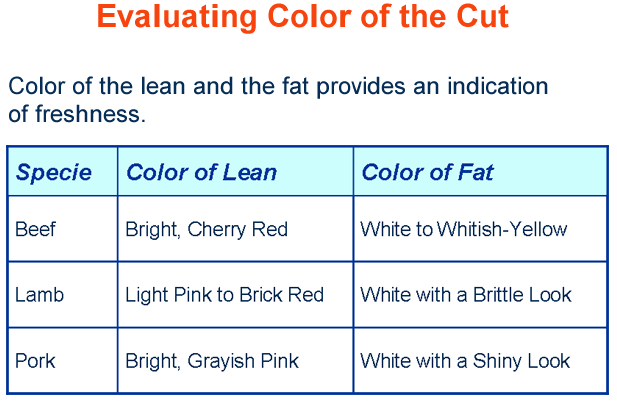
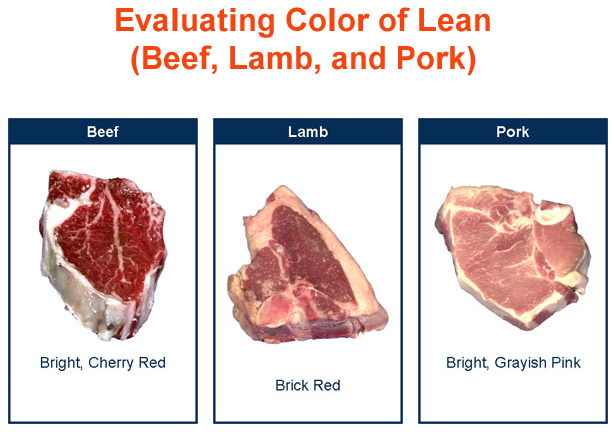
Evaluating Color of the Cut
- Dull or off colors may be an indication of:
- Aging
- Spoiling
- Poor quality control
- Poor handling of meat or animals prior to slaughter
- Meat cuts that ar overly dark or very pale in color should be discounted.
Putting It All Together
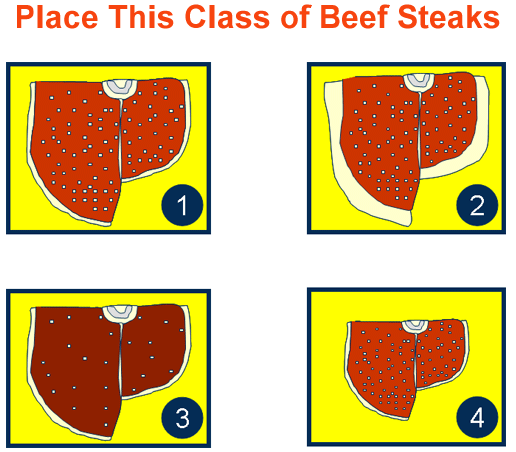
- Official Placing: 1-2-4-3
- Cuts: 3-5-2
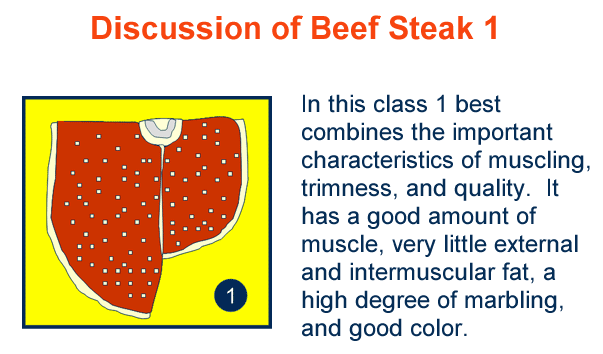
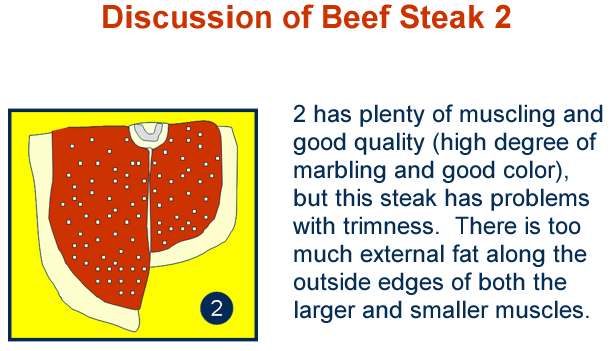
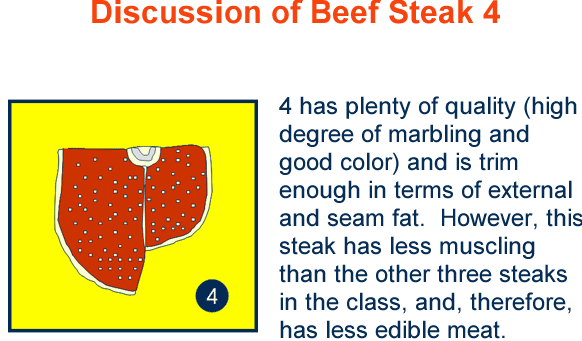
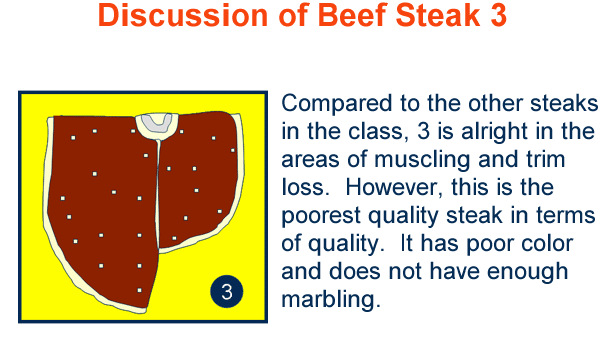
Final Tips
Final Tips for Judging Retail Meat Cuts
- Remember the three important characteristics (muscle, trim loss, quality) to evaluate.
- Evaluate lots of different retail meat cuts.
- Practice your judging skills.
You are ready to judge retail meat cuts!
